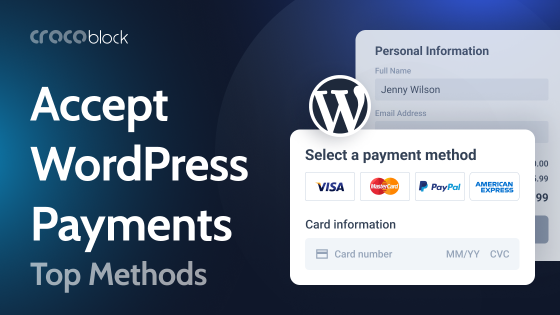Anything that can go wrong will go wrong. I dare to add to this Murphy’s law, “especially if you are a novice taking the first steps in web design.” Although the path of trial and error is the traditional one, let’s discuss how to get around controversial points in website design contracts.
The most popular advice here is to use a website design contract. But do freelancers need contracts? Is it reasonable to have one, and when?
In this article, I summarized the experience of many designers shared freely on the interwebs. I am not a lawyer; therefore, I do not provide legal advice. I outline the pitfalls in web design contract preparation and present a list of non-obvious practical points. Let’s get started.
- What Are Web Design Contracts?
- Pros & Cons of Web Design Contracts for Freelancers
- Simple Contract Templates
- Best Practices and Subtle Points
- Pre-Designing Cushing a Shock
- FAQ
- Conclusions
What Are Web Design Contracts?
A web design contract is a document describing in detail the obligations and rights of each party. Not only is it a clear description of responsibilities but a document of legal control, including the post-designing time. In short, it is an agreement between the contractor and the customer.
This document is a guarantee of honest work. It defines critical factors such as price, copyright, and deliverables. The parties agree on the terms in advance, find compromises, and fix the details. Such contract’ provisions vary greatly depending on specific circumstances. Studios and advanced web designers have many web design contract templates, such as a memorandum of agreement template, because the ideal contract is the primary tool of their business.
Pros & Cons of Web Design Contracts for Freelancers
Freelancers working through Upwork often don’t know such words as a contract or invoice. As the price and size of their projects increase, they will find that 20% of the Upwork commission is too much. Design contracts will become a necessary part of their work from this moment.
Design contract pros:
- specification of works: no free revisions and tasks without payments;
- strict scope of works: do not develop something not covered by a contract;
- fixed number of edits: everlasting edits are often an indicator of a client’s unwillingness to pay;
- fixing deadlines: it restricts not only project delivery terms but also approval terms at every site development stage;
- clarification of rights and obligations of the parties: the client and the freelancer are interested in the successful completion of the project;
- force majeure situations: either party can suddenly fall out, and one should be prepared for that;
- conflict situations and penalties for non-compliance: no cancellation of the uncompleted project without full payment.
Design contract cons:
- time and money to develop a perfect contract: it is not enough to download a simple contract template; you need time and money to consult with a lawyer;
- court cases: need time to envisage legal costs.
The case should not make it to court since a good contract takes into account a lot.
Simple Contract Templates
There are a lot of simple contract templates on the Internet, but they cannot fully cover the entire range of your services and, therefore, protect your rights. If you download a free terms and conditions template, make sure to edit the document so it covers all the intricacies of a particular web design project.
You can download any simple contract agreement template; for instance, this free Web Design Agreement Template by PandaDoc or this Simple Website Contract Template by Signaturely. Still, the website design terms and conditions template should include web design specifics. Check out the list below.
Web design specifics include:
- number of free revisions: discuss the number of free revisions and since which moment they will have to pay extra;
- definition of a motivated request for revisions: any request for the modification should refer to the project specification or brief;
- contact person to discuss the project: only one person should approve the design and design elements throughout all project stages;
- reference materials: the project specification and brief should contain references and prototype sites;
- transfer of materials to the client: specify the format, resolution, etc.;
- design processing and approving;
- the copyright: the right to put this sign on the pages of the released site;
- the right to publicly mention the authorship and present the site in the portfolio.
The most acute problems are what to do with an uncompleted/unpaid project and whether designers can include such projects in their portfolios and site collections.
To make sure that the contract covers all the subtleties of website design development, see the vital provisions of the web design contract:
- the parties involved: names and contact data of all involved parties;
- the scope of works with clear definitions: no photo and content development if you specify only front-end works;
- the stages of the project with clearly defined timing milestones and payment terms;
- revisions and approvement: specify the stages of website design development that need to be approved; limit the number of free revisions and approval terms;
- termination of the contract: establish what to do when you/the client wants to terminate the project, you fail to complete it, or the client fails to pay (especially what to do with the unpaid project and its parts);
- non-disclosure provisions: as a rule, contracts include a non-disclosure agreement (NDA) by default, but bring up the right to indicate your authorship;
- ownership issues: indicate whether you are allowed to use this site for promotions;
- warranties and maintenance: the warranty is out if the client changes the site’s code, transfers access passwords to third parties, or changes hosting;
- force majeure: it is desirable to reach an agreement for such cases and cooperation postponement, termination of the contract, or something else;
- signatures.
Remote work is a norm for web design development, and many people sign contracts remotely. For some cases, lawyers advise inviting witnesses.
Best Practices and Subtle Points
It’s best practice to have a brief, specification, or questionnaires filled by the client, before starting the design. These documents clearly outline the scope of work and define a precise process organization.
Attach a site design sketch to the contract to have a base for further project development.
As to subtle points, they are as follows:
- use email to fix all agreements, requirements, and transfer documents since both the correspondence and the exchange of documents must have legal force;
- the designer is subject to limited liability within the prescribed scope of work. It is obvious, but include this provision into the contract;
- divide the design process into stages and ask to sign acceptance certificates after completing each step;
You can slip by deadlines defined in the contract if the client delays filling out the questionnaire. As a result, the waiting time increases, and you have less time for the project. Please mind adding provisions to regulate the extended timing for completing website design work.
- never start work without guarantees of payment;
- if something goes wrong, redo it when it is still possible to fix bugs, but not when the project is almost ready;
- transfer the source files after full payment and signing of the services acceptance certificate by the client;
- the design will be deemed accepted by default if the client did not provide comments within any limited time (approximately 3-7 days);
- save all documents and work results.
Novices often work at meager prices, which attract strange clients.
Pre-Designing Advice
It is sad but true that sometimes contracts do not work because:
- some clients do not read the contract at all;
- sometimes a manager reads the contract, a layer agrees to its provisions, and the project leader signs without looking it through;
- the client and the designer cannot reach a consensus on the final results.
This way, pre-designing communication with the client is a must-have. Some experienced designers advise making a pre-designing presentation. It should highlight the project stages, payment stages, the most crucial stages, and why the designer can’t do all the client likes. Well-done presentations increase client loyalty, weed out strange clients, and improve mutual understanding.
FAQ
The studio employs several specialists not only to create/test design the site but to make it conversionable.
Yes, designers can involve third parties (other designers, copywriters, marketers). But they bear full responsibility for the quality of the final product.
The development time for a small site is 2-4 weeks approximately. Development of a large Internet portal takes at least three months. But every project has its features, so discuss the terms.
Yes, but first, you should discuss it with the other parties. Then develop an additional contract.
Conclusions
The contract is a disciplined and motivating document that can save you from many troubles. The parties agree on the terms in advance, find compromises, and fix the details in the contract.
Therefore, a well-developed contract makes it possible to work calmly and productively for your pleasure in the future. And remember that in any crisis, clients first pay according to contracts. If you have none, some of them can forget about payment.



